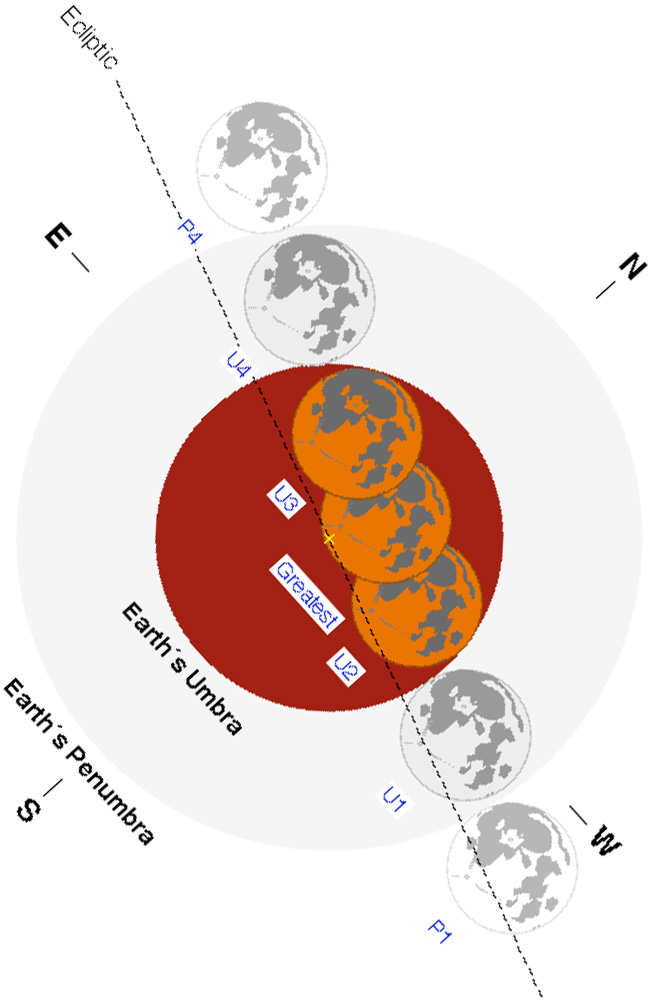
The Total Lunar Eclipse of Tuesday, November 8th, 2022
The moon will be above Idaho horizons for the duration of this fairly deep total eclipse.

Adapted from a diagram by NASA. Note that, although the moon's orbital motion causes it to move to the upper left (east-northeast) relative to Earth's shadow, it (and the shadow) are moving to the lower right (west) due to Earth's rotation. Thus, for observers in Idaho, the moon moves lower in the sky relative to the local horizon throughout the eclipse.
Eclipse timeline (all times listed are in Mountain Standard Time (GMT-7 hrs.), and lunar altitude/twilight times are given for Twin Falls, Idaho, USA):
- 1:02 AM — First penumbral phase (P1) begins Moon begins to enter Earth's penumbral (partial) shadow. No conspicuous darkening will occur until roughly an hour later.
- 1:45 AM — Centennial Observatory opens, weather permitting.
- 2:09 AM — First partial phase (U1) begins (first umbral contact). A small, dark "bite" begins to appear at the moon's upper left edge.
- 3:17 AM — Total phase (U2) begins, first partial phase ends (second umbral contact). The moon is completely immersed in Earth's umbra, taking on a red-orange, orange-brown, or darker color, depending on global atmospheric conditions. Totality begins with the moon appearing darkest at the upper left and brightest at the lower right.
- 4:00 AM — Greatest eclipse. The moon reaches its maximum excursion into the umbral shadow, appearing at its darkest. For this particular eclipse, the moon will be fairly deep in the umbral shadow, and so may appear quite dark.
- 4:42 AM — Total phase (U3) ends, last partial phase begins (third umbral contact). Just before this point, the moon appears darkest on bottom and brightest on top. As it emerges from Earth's umbra, a growing, bright sliver appears at top edge of the lunar disk.
- 5:44 AM — Start of morning twilight.
- 5:49 AM — Last partial phase (U4) ends, last penumbral phase begins (fourth umbral contact). The last, dark "bite" of shadow slips off the moon's lower edge. From this point on, the moon appears normal, except for an increasingly subtle darkening of its lower edge from Earth's penumbral shadow.
- 6:00 AM — Observatory closes.
- 6:01 AM — Moon below 15° altitude, too low for 24" telescope.
- 6:56 AM — Last penumbral phase (P4) ends (end of eclipse). Well before this point, the moon appears completely normal to the eye, the penumbral shading being too subtle to detect.